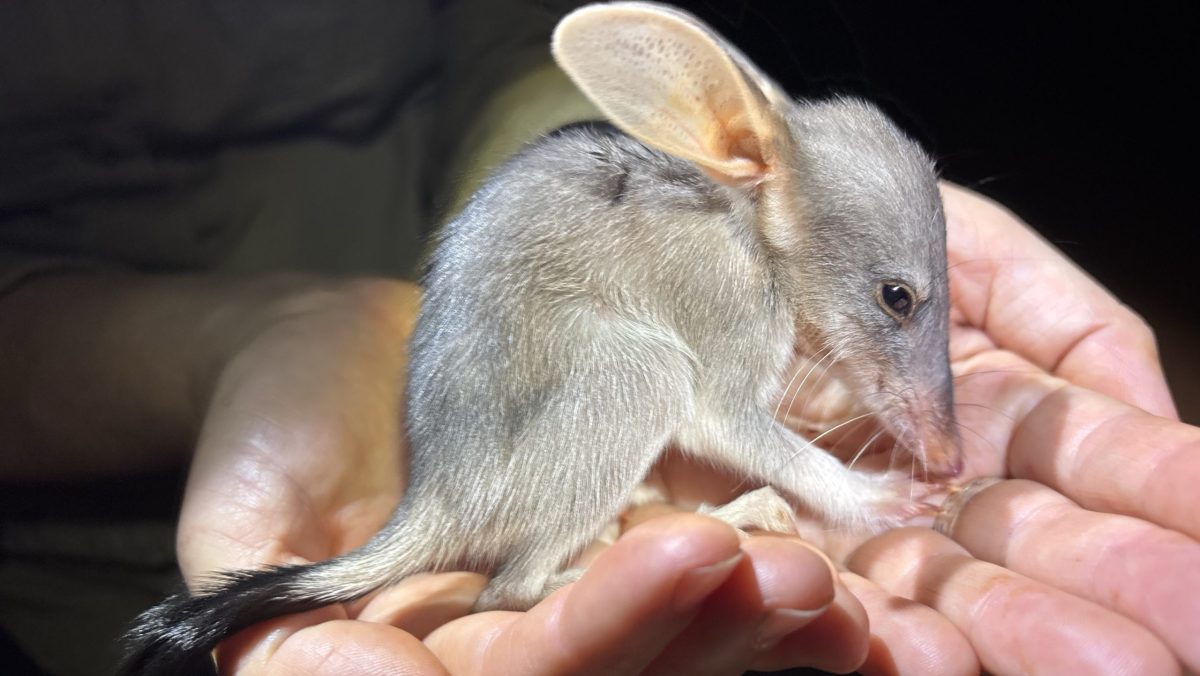Our very own Aussie Easter Bunny, the Greater Bilby, is fighting its way back from the brink of extinction across Australia.
The 5th annual AWC (Australian Wildlife Conservancy) Bilby Census has just been completed, providing updates on the populations of the cute little mammals across all six of their feral-predator proofed sanctuaries, including Pilliga State Conservation Area.
The census data tells a promising story with most population numbers stabilising across the country, with an estimated 3330 individuals being counted across all six sanctuaries.
“Prior to this project there had been no sightings of bilbies in NSW in over 100 years.” said Dr Greg Holland, Regional Ecologist for AWC.
“Largely due to them being preyed upon by feral cats and foxes, the population has become known as a creature that only lives in the centre of Australia in the deserts, but the reality is that is not their natural habitat. We know from our research that areas like the Pilliga were once home to a very healthy population of bilbies, they’ve just be progressively pushed inwards to the desert areas.”
Pilliga State Conservation area is a 36,000-hectare project that is run by AWC in conjunction with the NSW State Government. Within the main conservation area, there is a 5,800-hectare feral predator-free fence, which has allowed the reintroduction of six locally-extinct mammals including: Bridled Nailtail Wallaby (2019), Brush-tailed bettong (2022), Plains Mouse (2023) and Shark Bay Bandicoot (2023) and, of course, the Greater Bilby, that was first reintroduced to the area in 2018.
“It was actually a bit of an unknown for us when we came to reintroducing the bilbies to the Pilliga – We knew they should be living there but they hadn’t done so in such a long time, we really weren’t sure how they’d respond,” said Dr Holland.
It would seem they’re responding very well as the latest census also discovered a male they’re affectionately referring to as ‘Big Boy’.
“We’ve recorded a male at 2.2kg, that’s the biggest male we’ve had in the Pilliga so far and it is in fact on the upper size limit for bilbies in general,” said Dr Holland.
“This tells us that they’re very healthy and they’re doing well in this habitat.”
It’s hoped in turn that the bilbies will also help the Pilliga regenerate.
“Bilbies aren’t just cute, they actually play a really important part in our ecosystem, they’re what’s known in ecological terms as an ecosystem engineer,” said Dr Holland.
“What this means is that they modify the environment that they live in – for bilbies, this is all do to with them digging foraging pits and also their burrows.”
“What we find is that, in a semi-arid area like the Pilliga, this digging allows rainfall to accumulate in pools and then sink into the ground. It also offers holes for leaf litter to accumulate and break down to provide nutrients for the soil.”
“It will take time but we should eventually be able to track some noticeable improvement in vegetation in the area.”
So, what’s next for these pint-sized critters?
“Once we really see the population numbers start to increase in the Pilliga we have plans to introduce another threatened species, the Western Quoll,” said Dr Holland.
“They will of course prey on the bilbies and some of the other smaller mammals in the area but this is all about creating a balanced ecosystem.”
And as to whether we will ever see bilbies roaming freely around the New England once more Dr Holland said, “We certainly hope so but it’s a very long road to recovery, we’re in a monitoring phase at the moment but, realistically, until we can start talking about some really intensive feral cat and fox control, we can’t look at releasing any bilbies outside the fenced area.”
Until then, when you reach for that Easter Bunny at the shops over the weekend – you could always consider an Easter Bilby instead, with companies like Darell Lea chocolate still producing their famous chocolate bilbies with funds going to the Save the Bilby Fund. You can also donate directly to the Australian Wildlife Conservancy via their website.
Like what you’re reading? Support New England Times by making a small contribution today and help us keep delivering local news paywall-free. Support now


